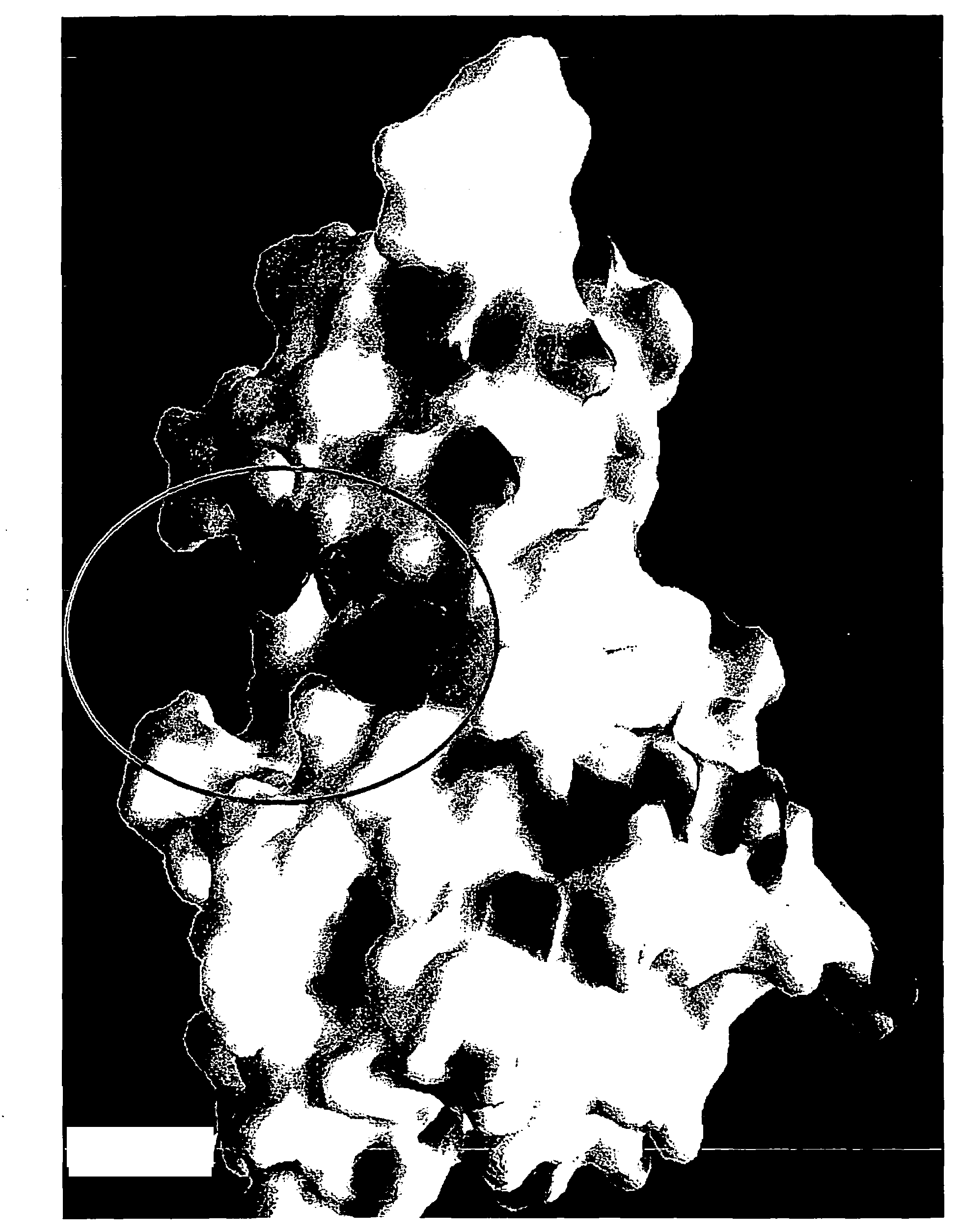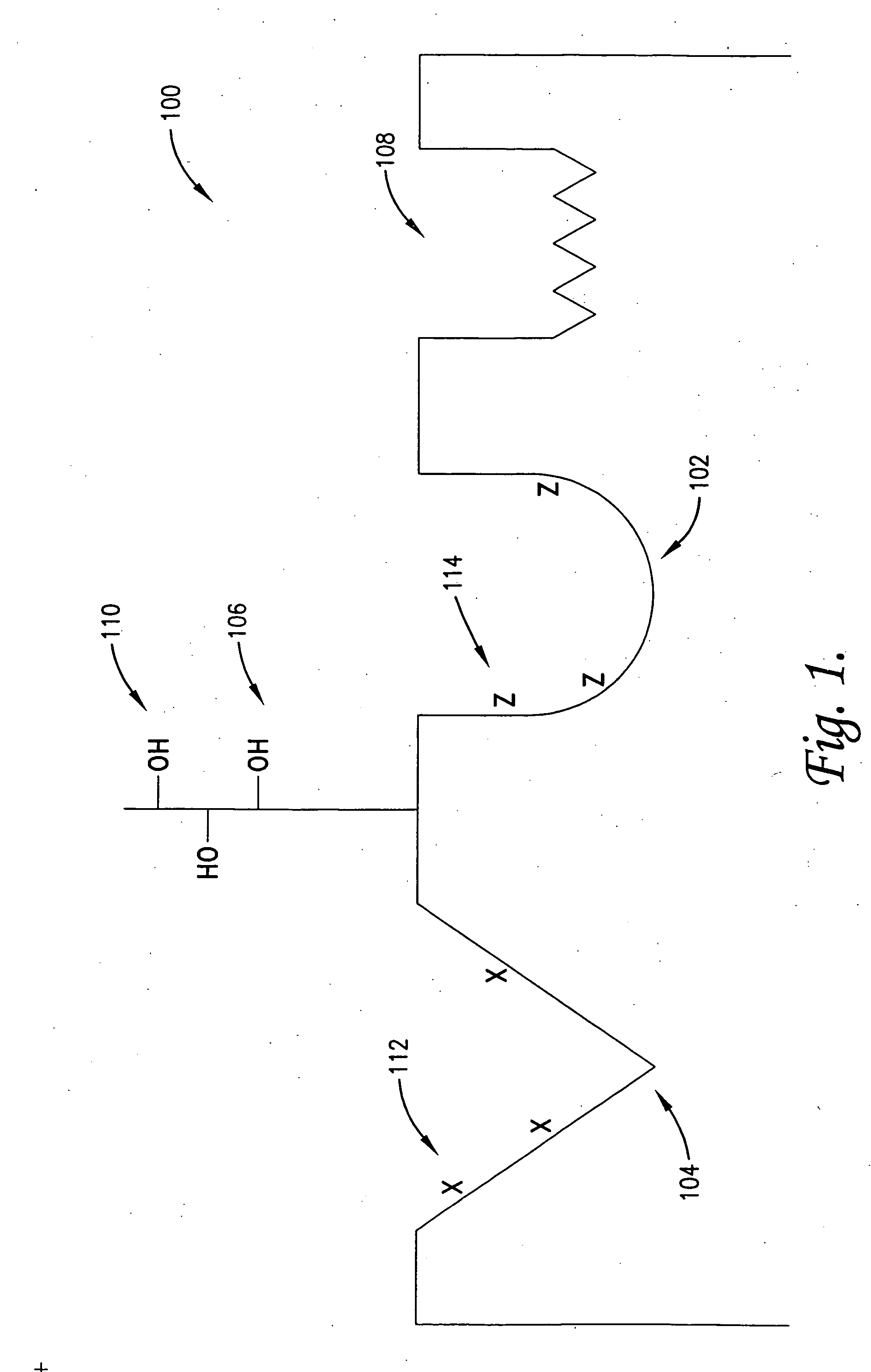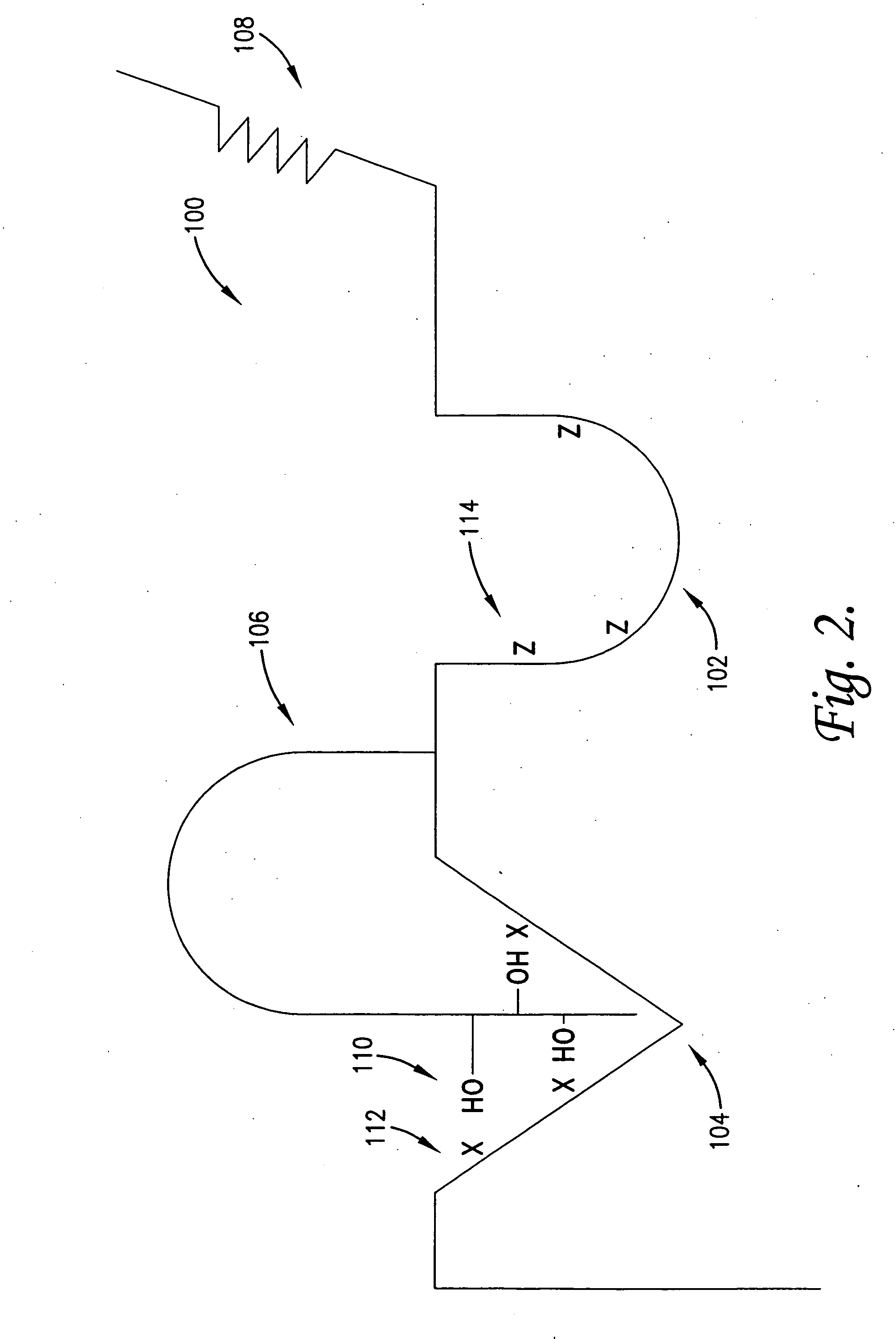Modulation of protein functionalities
a protein and functional technology, applied in the field of protein functionalities, can solve the problems of lack of selectivity, insufficient therapeutic windows to achieve maximum efficacy, and the method and strategy by which the pharmaceutical industry sets about developing small molecule therapeutics has not significantly advanced, and achieves the effect of modulating the activity of proteins
- Summary
- Abstract
- Description
- Claims
- Application Information
AI Technical Summary
Benefits of technology
Problems solved by technology
Method used
Image
Examples
example a
[0140]In the following steps 1-3, techniques are illustrated for the identification and / or development of small molecules which will interact at the region of switch control pockets forming a part of naturally occurring proteins, in order to modulate the in vivo biological activity of the proteins. Specifically, a family of 8 known kinase proteins are analyzed using the process of the invention, namely the Abl, p38-alpha, wild-type Braf, oncogenic V599E Braf, Gsk-3 beta, insulin receptor-1, protein kinase B / Akt and transforming growth factor B-I receptor kinases. These examples are illustrative of the techniques and are not intended to limit the application thereof.
Step 1: Identification and Classification of Switch Control Ligands Within the 8 Kinase Proteins
[0141]In general, the switch control ligands of the kinases can be identified from using sequence and structural data from the respective kinases, if sufficiently detailed information of this type is available. Thus, this step ...
example b
Step 4: Express and Purify the Proteins Statically Confined to Their Different Switch Controlled States
[0210]Gene Synthesis. Genes were completely prepared from synthetic oligonucleotides with codon usage optimized using software (Gene Builder™) provided by Emerald / deCODE genetics, Inc. Whole gene synthesis allowed the codon-optimized version of the gene to be rapidly synthesized. Strategic placement of restriction sites facilitated the rapid inclusion of additional mutations as needed.
[0211]The proteins were expressed in baculovirus-infected insect cells or in E. coli expression systems. The genes were optionally modified by incorporating affinity tags that can often allow one-step antibody-affinity purification of the tagged protein. The constructs were optimized for crystallizability, ligand interaction, purification and codon usage. Two 11 Liter Wave Bioreactors for insect cell culture capacity of over 100 L per month were utilized.
[0212]Protein purification. For protein purific...
example c
Step 5. Screening of the Purified Proteins with Candidate Small Molecule Switch Control Modulators
[0228]Fluorescence Affinity Assay for Probing the Binding of Switch Control Inhibitors into Kinase Protein Switch Control Pockets
[0229]A fluoroprobe which does not fluoresce unless it is bound into the ATP pocket of a kinase is utilized in a general way to establish a fluorescence affinity assay. This fluorescence affinity assay is utilized in an affinity-based screen to identify small molecules which bind into switch control pockets of protein kinases. Binding of small molecule switch inhibitors displaces the switch control ligand phenylalanine of the DFG motif into an orientation which sterically blocks the ATP pocket. Such inhibitor-induced blockade of the ATP pocket is registered as an inhibition of binding of the fluoroprobe into the ATP pocket.
[0230]SKF 86002 is the fluoroprobe used in the p38 kinase fluorescence affinity assay. This fluoroprobe has been previously described (C. P...
PUM
| Property | Measurement | Unit |
|---|---|---|
| molecular weight | aaaaa | aaaaa |
| molecular weight | aaaaa | aaaaa |
| molecular weight | aaaaa | aaaaa |
Abstract
Description
Claims
Application Information
 Login to View More
Login to View More - R&D
- Intellectual Property
- Life Sciences
- Materials
- Tech Scout
- Unparalleled Data Quality
- Higher Quality Content
- 60% Fewer Hallucinations
Browse by: Latest US Patents, China's latest patents, Technical Efficacy Thesaurus, Application Domain, Technology Topic, Popular Technical Reports.
© 2025 PatSnap. All rights reserved.Legal|Privacy policy|Modern Slavery Act Transparency Statement|Sitemap|About US| Contact US: help@patsnap.com



